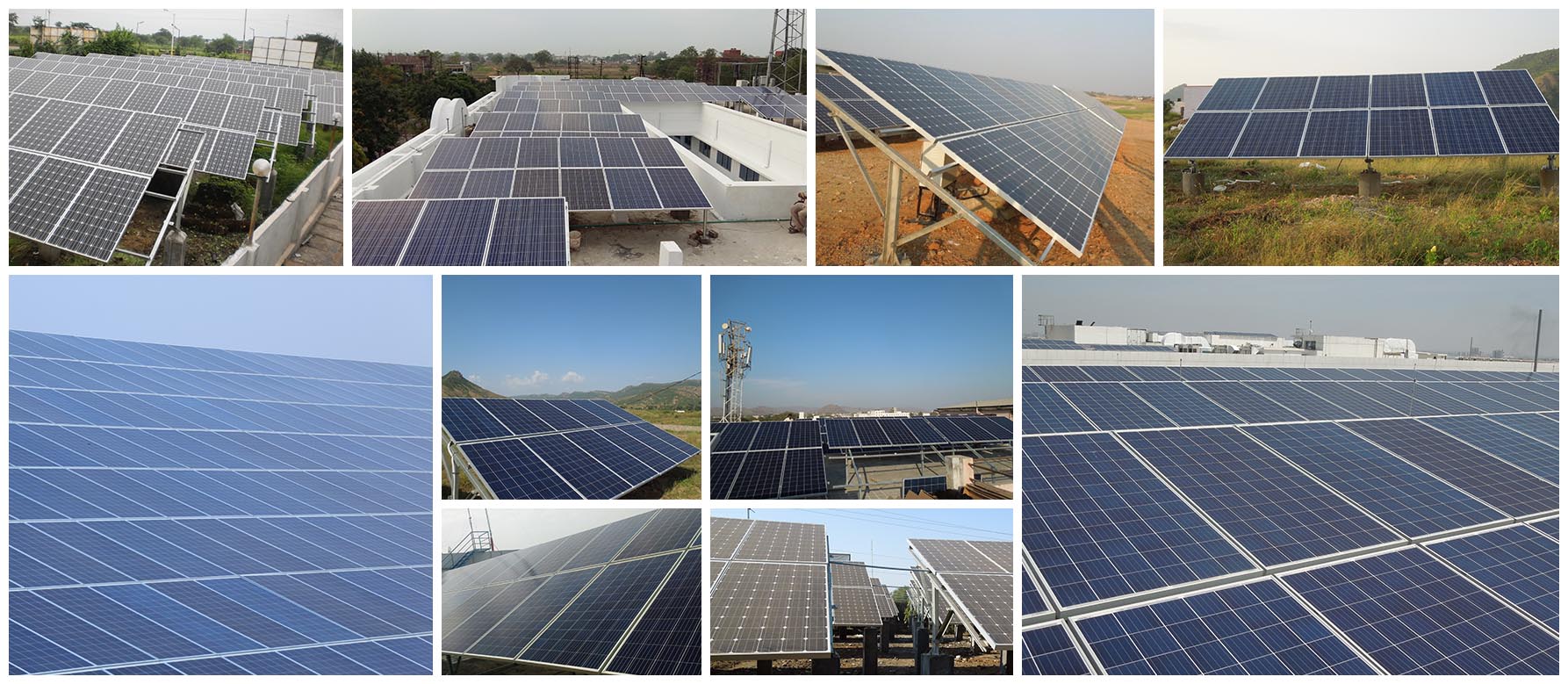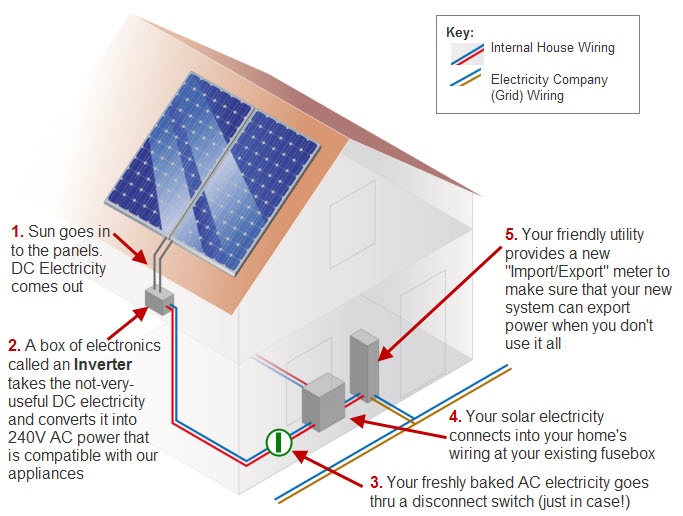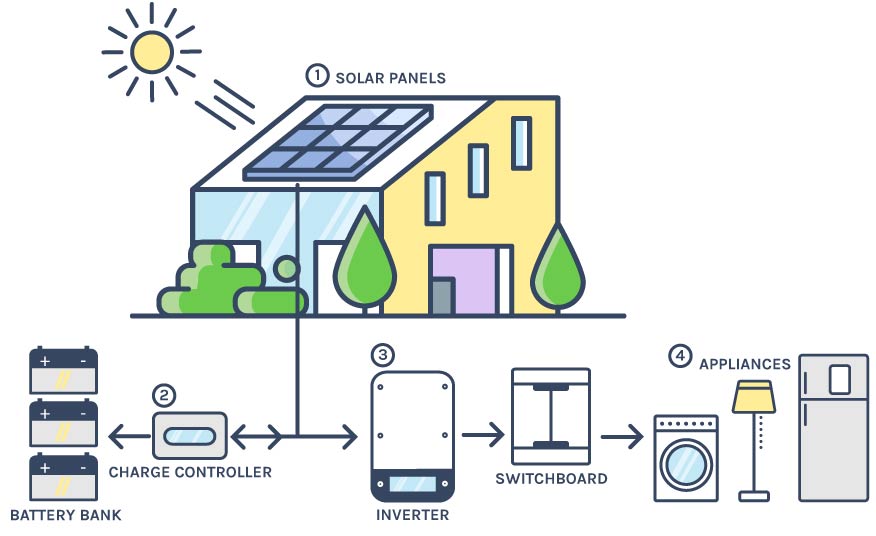HOW DOES SOLAR SYSTEM WORKS
ON-GRID, OFF-GRID, HYBRID SYSTEMS
All solar power systems work on the same basic principles. Solar panels first convert solar energy into DC power which can be stored in a battery or converted by a solar inverter into AC power, which can be used to run home appliances. Depending on the type of system, excess solar energy can also be fed into the electricity grid to provide credits and further reduce electricity costs.
TYPES OF SOLAR SYSTEMS
On-Grid Solar System
On-grid or grid-tie solar systems are by far the most common and widely used by homes and businesses. These systems do not need batteries and use common solar inverters and are connected to the public electricity grid. Any excess solar power that you generate is exported to the electricity grid and you usually get paid a feed-in-tariff (FiT) or credits for the energy you export.
Unlike hybrid systems, on-grid solar systems are not able to function or generate electricity during a blackout due to safety reasons. Since blackouts usually occur when the electricity grid is damaged; If the solar inverter was still feeding electricity into a damaged grid it would risk the safety of the people repairing the fault/s in the network. Most hybrid solar systems with battery storage are able to automatically isolate from the grid (known as islanding) and continue to supply some power during a blackout.
Batteries are able to be added to on-grid systems at a later stage if required. The Tesla Powerwall 2 is a popular AC battery system which can be added to an existing solar system.
Off-Grid Solar System
An off-grid system is not connected to the electricity grid and therefore requires battery storage. An off-grid solar system must be designed appropriately so that it will generate enough power throughout the year and have enough battery capacity to meet the home’s requirements, even in the depths of winter when there is less sunlight.
The high cost of batteries and inverters means off-grid systems are much more expensive than on-grid systems and so are usually only needed in more remote areas that are far from the electricity grid. However battery costs are reducing rapidly, so there is now a growing market for off-grid solar battery systems even in cities and towns.
Hybrid Solar System
Modern hybrid systems combine solar and battery storage in one and are now available in many different forms and configurations. Due to the decreasing cost of battery storage, systems that are already connected to the electricity grid can start taking advantage of battery storage as well. This means being able to store solar energy that is generated during the day and using it at night. When the stored energy is depleted, the grid is there as a back up, allowing consumers to have the best of both worlds. Hybrid systems are also able to charge the batteries using cheap off-peak electricity (usually after midnight to 6am).

ON-GRID SOLAR SYSTEM DIAGRAM
Also known as a grid-tie or grid-feed solar system

OFF-GRID SOLAR SYSTEM DIAGRAM
Also known as a stand-alone power system (SAPS)

HYBRID SOLAR SYSTEM DIAGRAM
Solar plus battery storage with grid-connection


